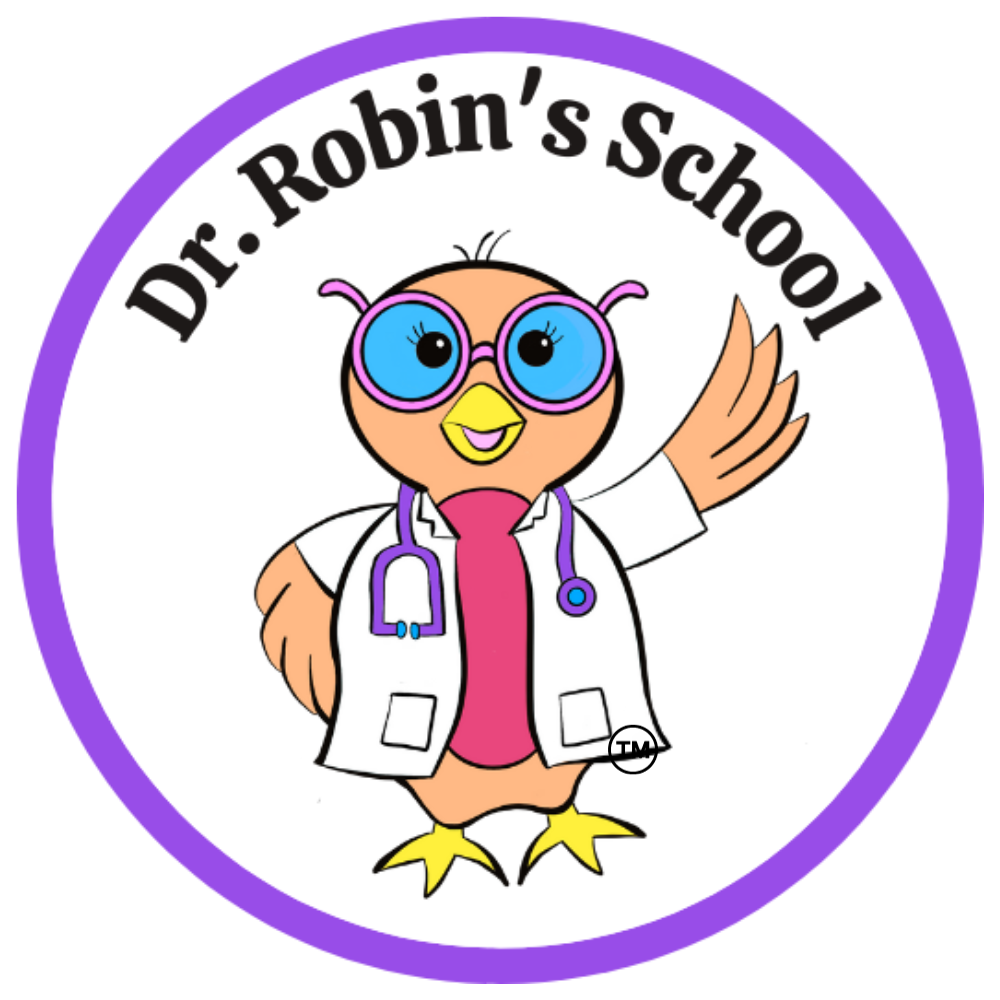Is your course for older or younger children?
Dr. Robin’s School is designed to be flexible and adaptable, making it suitable for a range of ages. The core curriculum, Every Body’s Human Biology, is appropriate for students who are curious about how their bodies work and are ready for lessons of about 20 minutes in length. This means that a curious 8-year-old can benefit from the program, as can a focused 14-year-old. The same material can be approached at different levels of depth and complexity.
Dr. Robin’s philosophy is that science education should start early, building a foundation of understanding rather than just memorizing facts. The program aims to teach students how to think scientifically, a skill that’s valuable no matter what career path they choose.
To help accommodate different learning styles and paces, we offer different learning schedules:
- Schedule A (Once a Week): A gentle introduction, perfect for younger students or those new to the material.
- Schedule B (Twice a Week): A balanced approach, providing more detail and engagement.
- Schedule C (Comprehensive): Designed for middle schoolers ready to dive deep into scientific thinking and understanding physiology and pathophysiology.
Ultimately, you are the best judge of when your child is ready to begin exploring the world of human biology.
Want to gauge if your child is too advanced? These open-ended questions will help you assess their grasp of the material. It’s not about memorizing facts; it’s about applying knowledge. Even students who think they know the basics might struggle when asked to explain concepts.
Here are some example questions to ask your child:
Circulatory System:
- What happens to someone with low iron? What would their red blood cells look like? What symptoms would they have?
- What’s the difference between a heart attack and heart failure? What causes the heart to beat? Why does the heart need its own blood vessels? What happens if the heart doesn’t pump well?
Endocrine System:
- Why might a child with type 1 diabetes have cake at a party, but their aunt with type 2 diabetes might not? What are the differences between the two types of diabetes? What causes each? Are they treated the same? What does insulin do?
Respiratory System:
- Where do asthma and pneumonia occur in the lungs, and why are they treated differently? What’s the role of cartilage in asthma? How do doctors determine if pneumonia requires antibiotics?
Digestive System:
- What does each digestive organ do, and what would happen if it were removed? Why is the small intestine so long? Why do we digest food? How do nutrients get transported throughout the body?
Word Analysis:
- Can you figure out the meaning of these words by breaking them down into their roots and defining each root? (Hint: Use what you do know to figure out what you don’t know. These terms aren’t all directly covered in the program, as the goal is to develop reasoning skills.) Cardiomegaly, Pericarditis, Cytoplasm, Endoscope, Bronchoscope, Arthroscope, Macrophage, Electrocardiogram, Pneumothorax, Hyperthyroid, Hypothermia
If your child has completed the program and struggles with these questions, consider having them revisit the material. Think of it like learning fractions – repeated exposure is key! Encourage them to use all available resources: quizzes, worksheets, Quizlet reviews. Most importantly, ask them to explain what they’ve learned to you each week, not just recite it. This will help solidify their understanding and build critical thinking skills.
